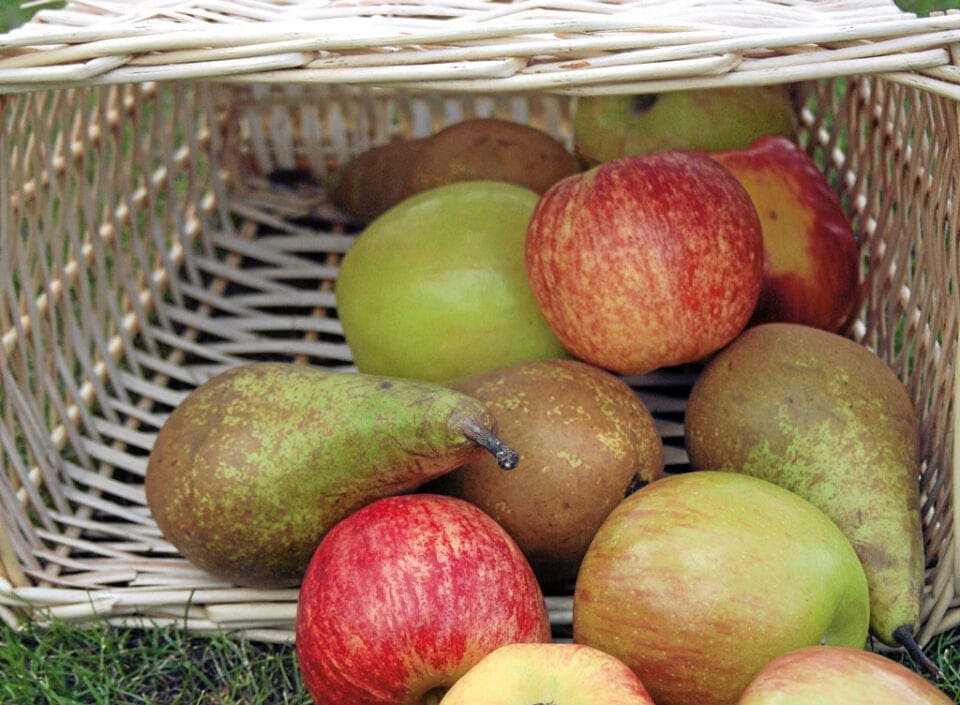Shop-bought apples are great, but if you have never grown your own, your choice will have been restricted to a handful of varieties chosen partly for taste, but also for their travelling and storage qualities. Yet there are so many more to choose from, all with their own unique flavours and textures.
Apples are easy to grow and undemanding and thanks to some excellent dwarfing rootstocks, it is possible to grow them in the smallest of gardens. If you lack space then grow apples as cordons or espaliers against a fence, as step-over trees along the border edge or in tubs on a sunny patio.
Apple Varieties
There are hundreds of varieties to choose from, including culinary and dessert, and it is a good idea to go to an apple day event in the autumn and taste some to discover your favourites.
Some types are better for containers than others, such as Minarettes or Ballerina apple trees, and it is important to choose trees which have been grafted on to the correct rootstocks. However, contrary to the usual advice, it is not a good idea to go for trees grafted on the very dwarfing rootstocks.
Plants in pots are under stress and very dwarfing rootstocks can increase that stress. The semi-dwarfing rootstock M26 or MM106 is a good choice. For best results you should grow two or three apple varieties to aid pollination.

Apple Growing Tips
Apple trees are very hardy, but the flowers are vulnerable to cold and will be damaged if the frost gets to them while they are waiting to be pollinated.
It is important therefore to avoid cold areas of the garden (frost pockets), such as at the bottom of a slope where dense cold air tends to gather. A sunny spot is needed for good fruit set and ripening.
Apples prefer a free-draining soil with plenty of organic matter such as garden compost or well-rotted manure added when planting, but will often manage to produce a reasonable crop in less than ideal conditions.
When planting, make sure that the rootball is buried to the same depth as it was in the pot or in the nursery field – there is usually a soil mark on the stem to tell you.
Apples are nearly always grafted (the fruiting part is joined to the roots from another tree to control its growth; the knobble on the stem marking this point must be well above soil level after planting).
When planting bare-rooted plants, dig a hole large enough to take the roots without bending them. You will need to provide a stake to prevent wind rock until the tree is established in its new growing position.
How to prune an apple tree
Trained trees such as cordons and espaliers need hardly any pruning once established and are mainly pruned in August as the fruit is ripening; the sideshoots are simply pruned back to three leaves.
In the winter the main shoot is shortened to within three leaves of this season’s growth. Ordinary bush-trained trees need a little more attention, but will produce a reasonable crop if left to their own devices.
For best results prune in the winter when the tree is dormant, removing dead wood, crossing branches and those in the middle of the tree which prevent air and light from entering.
One-year-old branches can be left alone, but shorten older shoots that are not wanted to replace old branches to encourage fruiting spurs (stubby shoots on which the apples fruit) to form.
Very long branches on the outside of the tree can be tipped back, but do not give the tree a haircut or you will remove some fruit buds. If unsure, leave alone.
How to store apples
Scrumptious recipes for your homegrown apples
More grow guides
For more growing tips and guides, you should subscribe to Kitchen Garden – you’ll receive free seeds with every single issue too!





